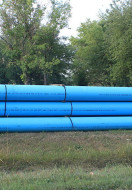In houses with forced-air heating and cooling systems, ducts are used to distribute conditioned air throughout the house. In a typical house, however about 20 percent of the air that moves through the duct system is lost due to leak, holes, and poorly connected ducts. The result is higher utility bills and difficulty keeping the house comfortable, no matter how the thermostat is set.
How do you know that your home has poorly performing ducts?
- you have high summer and winter utility bills;
- you have rooms that are difficult to heat and cool;
- your have stuffy rooms that never seem to feel comfortable;
- your ducts are located in an attic, crawlspace, or the garage;
- you find tangled or kinked flexible ducts in your system.
Benefits of Duct Sealing
A duct system that is well-designed and properly sealed can make your home more comfortable, energy efficient, and safer.
- Comfort: Sealing and insulating ducts can help with common comfort problems, such as rooms that are too hot in the summer or too cold in the winter.
- Indoor Air Quality: Fumes from household and garden chemicals, insulation particles, and dust can enter your duct system, aggravating asthma and allergy problems. Sealing ducts can help improve indoor air quality by reducing the risk of pollutants entering ducts and circulating through your home.
- Safety: During normal operation, gas appliances such as water heaters, clothes dryers, and furnaces release combustion gases (like carbon monoxide) through their ventilation systems. Leaky ductwork in your heating and cooling system may cause "back drafting," where these gases are drawn back into the living space, rather than expelled to the outdoors. Sealing leaks can minimize this risk.
- Save Money: Leaky ducts can reduce heating and cooling system efficiency by as much as 20 percent. Sealing and insulating ducts increases efficiency, lowers your energy bills, and can often pay for itself in energy savings. Plus, if you're planning to install new heating and cooling equipment, a well-designed and sealed duct system may allow you to downsize to a smaller, less costly heating and cooling system that will provide better dehumidification.
- Protect the Environment: Energy used in our homes often comes from the burning of fossil fuels at power plants, which contributes to smog, acid rain, and global warming. Simply put, the less energy we use in our homes, the less air pollution we generate.By sealing your ducts and reducing the amount of energy necessary to comfortable heat or cool your home, you can reduce the amount of air pollution generated.
Simple Steps to Improving Duct Performance
Because ducts are often concealed in walls, ceilings, attics, and basements, repairing them can be difficult. But there are things that you can do to improve duct performance in your house.
Some homeowners choose to take on duct sealing as a do-it-yourself project. Start by sealing air leaks using mastic sealant or metal tape and insulating all the ducts that you can access (such as those in attics, crawlspaces, unfinished basements, and garages.) Never use duct tape , as it is not long-lasting. Also, make sure that the connections at vents and registers are well-sealed where they meet the floors, walls, and ceiling. These are common locations to find leaks and disconnected ductwork.
Source: www.epa.gov







